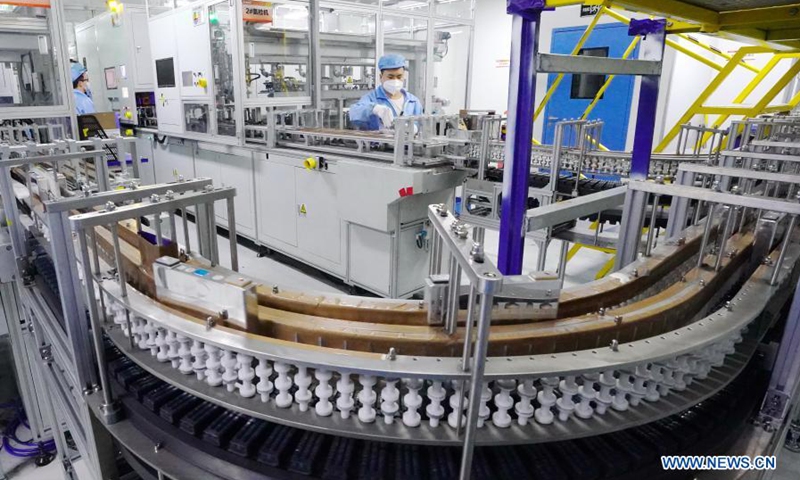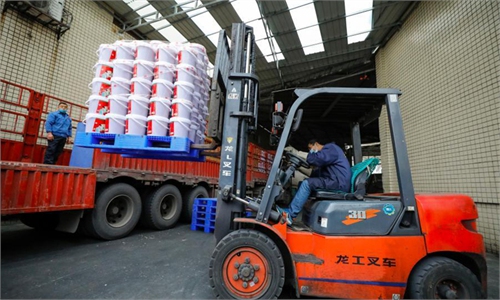Restructuring manufacturing sector helps Chinese provinces revive economies fast: experts

Workers operate on a production line at a lithium battery factory in Tangshan, north China's Hebei Province, Nov. 29, 2020. Lithium battery production has recently become a leading industrial sector in Lubei District of Tangshan. It is estimated that local manufacturers turn out 780 million yuan (about 118 million U.S. dollars) worth of lithium batteries every year. (Xinhua/Yang Shiyao)
After several provinces and cities in China revealed better-than-expected economic performances in 2020, experts pointed out the containment of COVID-19, structural adjustment and innovation remain top priorities to achieve an outstanding economic recovery this year.
According to the latest official statistics revealed on Wednesday, Beijing's GDP grew 1.2 percent year-on-year in 2020 to reach a total of 3.6 trillion yuan ($556.57 billion), far below the capital city's early goal of 6-percent growth set before the coronavirus outbreak.
"Achieving such a performance is not easy for Beijing, which suffered great losses from the COVID-19 outbreak at Xinfadi wholesale food market last June." Tian Yun, vice director of the Beijing Economic Operation Association, told the Global Times on Wednesday.
"Unlike Shandong and the southern provinces of Guangdong and Zhejiang, which heavily rely on manufacturing and exports, Beijing revived its economy by elevating the export capacity of the services and reaped benefits from the new economy," Tian said.
East China's Shandong Province, a large industrial and manufacturing province, achieved 3.6-percent GDP growth in 2020, the local government said on Tuesday.
Central China's Hunan Province reaped benefits from its manufacturing industry last year, according to Tian. Hunan saw its GDP rise 3.8 percent to 4.18 trillion yuan in 2020, higher than the national GDP growth rate of 2.3 percent.
The economy of Central China's Hubei Province contracted 5 percent last year to 4.34 trillion yuan, but all major indicators have been recovering at a faster pace and consumption returned to growth in December.
"In most regions across China - in addition to Beijing and Hubei - as long as their manufacturing and export sectors performed outstandingly last year, their economies were resilient," Tian noted.
With China's export machine roaring and helping to mend the coronavirus-fractured global supply chains, exports proved to be a tower of strength with a full-year gain of 3.6 percent in dollar terms in 2020.
That helped China to become the only major economy to record growth last year with a 2.3-percent expansion, and its GDP exceeded the 100 trillion yuan mark for the first time, official data showed on Monday.
"The core of China's economic recovery this year lies in structural adjustment and transformation. The economic growth rate is not pivotal," Cong Yi, a professor at the Tianjin University of Finance and Economics, told the Global Times.
He added that different cities should give innovation a significant place.
For Tian, the priority for China this year is to contain the virus as it posed heavier impacts on the supply side than the demand side. "Only if we contain the virus can our exports remain robust so as to provide opportunities to make domestic structural and currency adjustments as well as deleverage."




